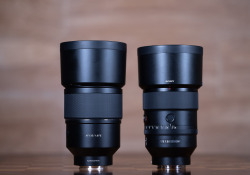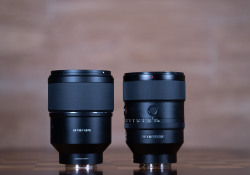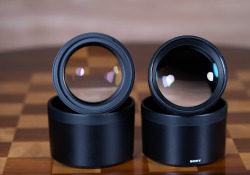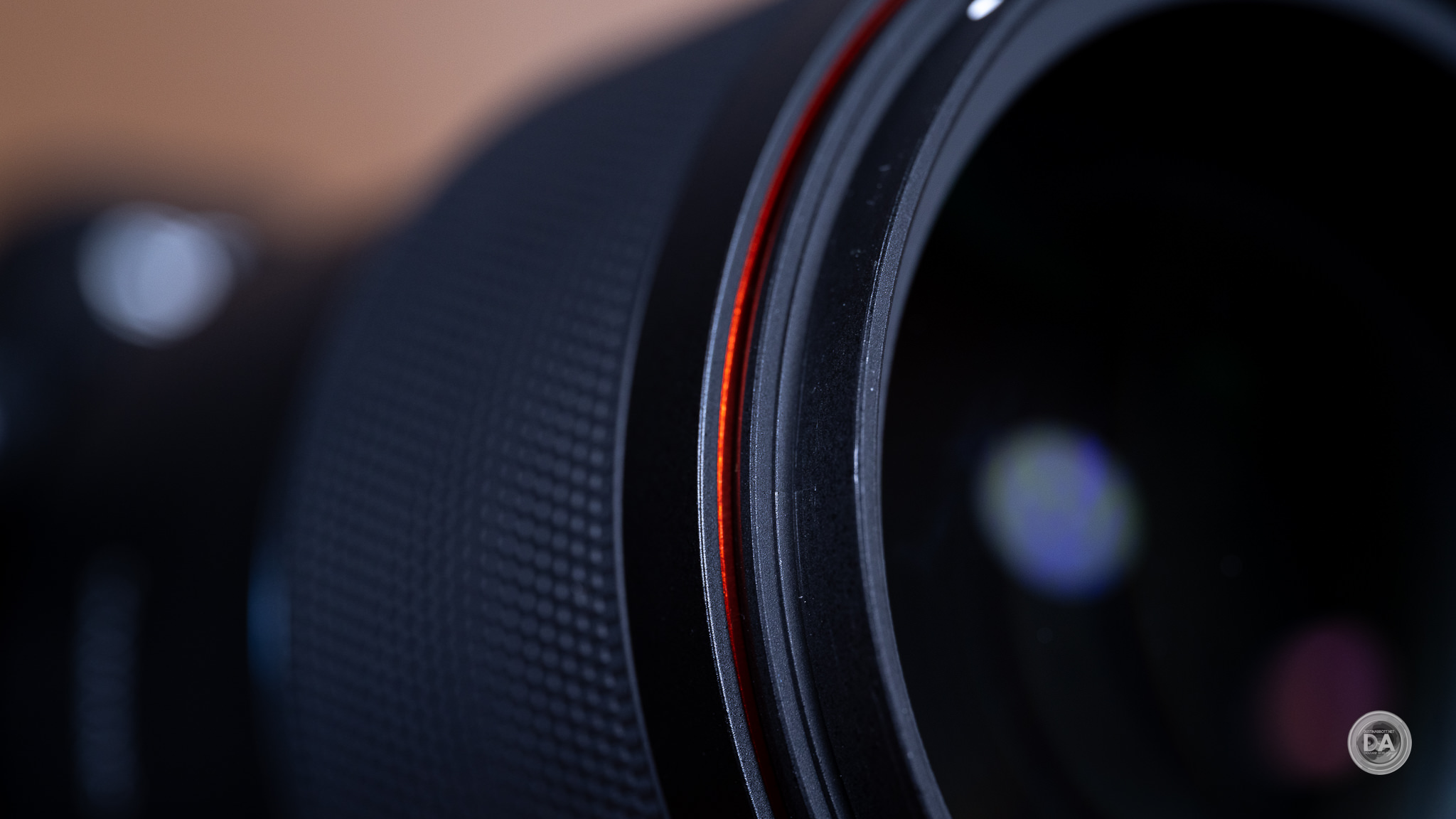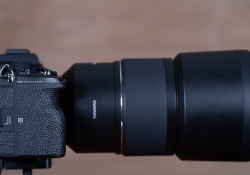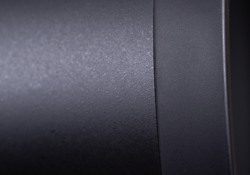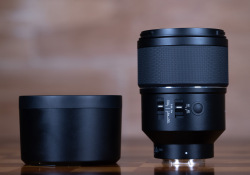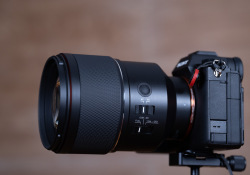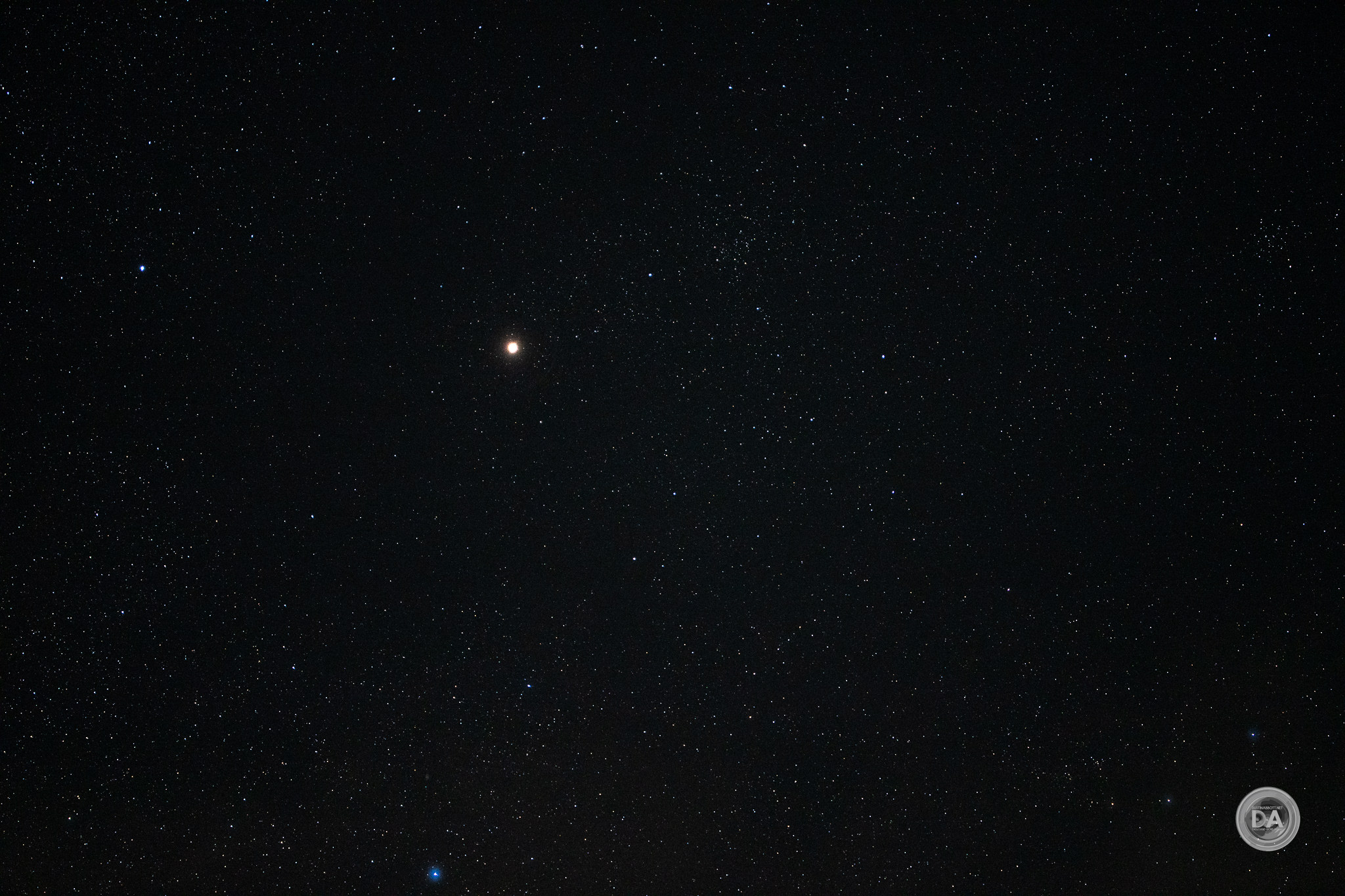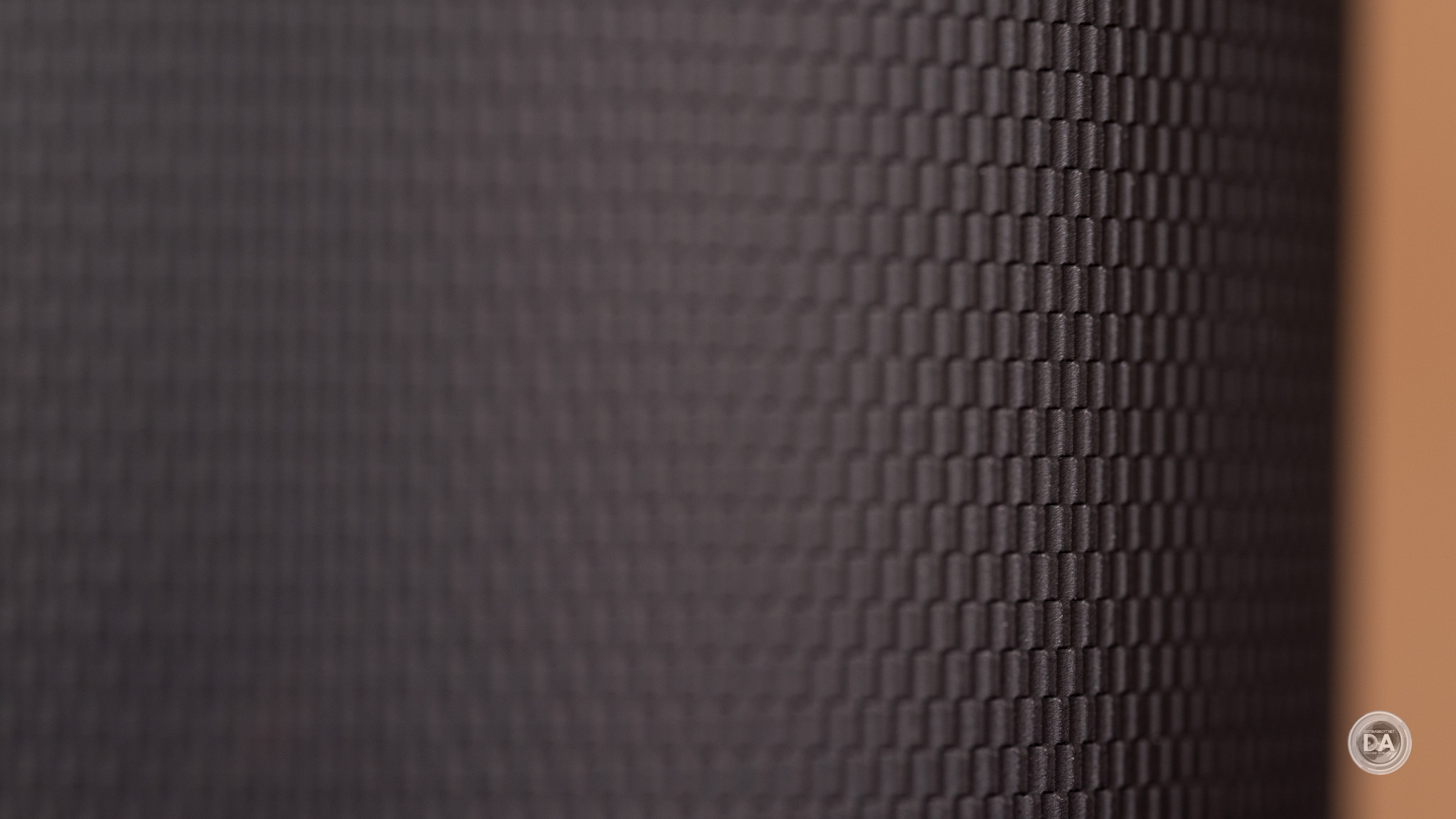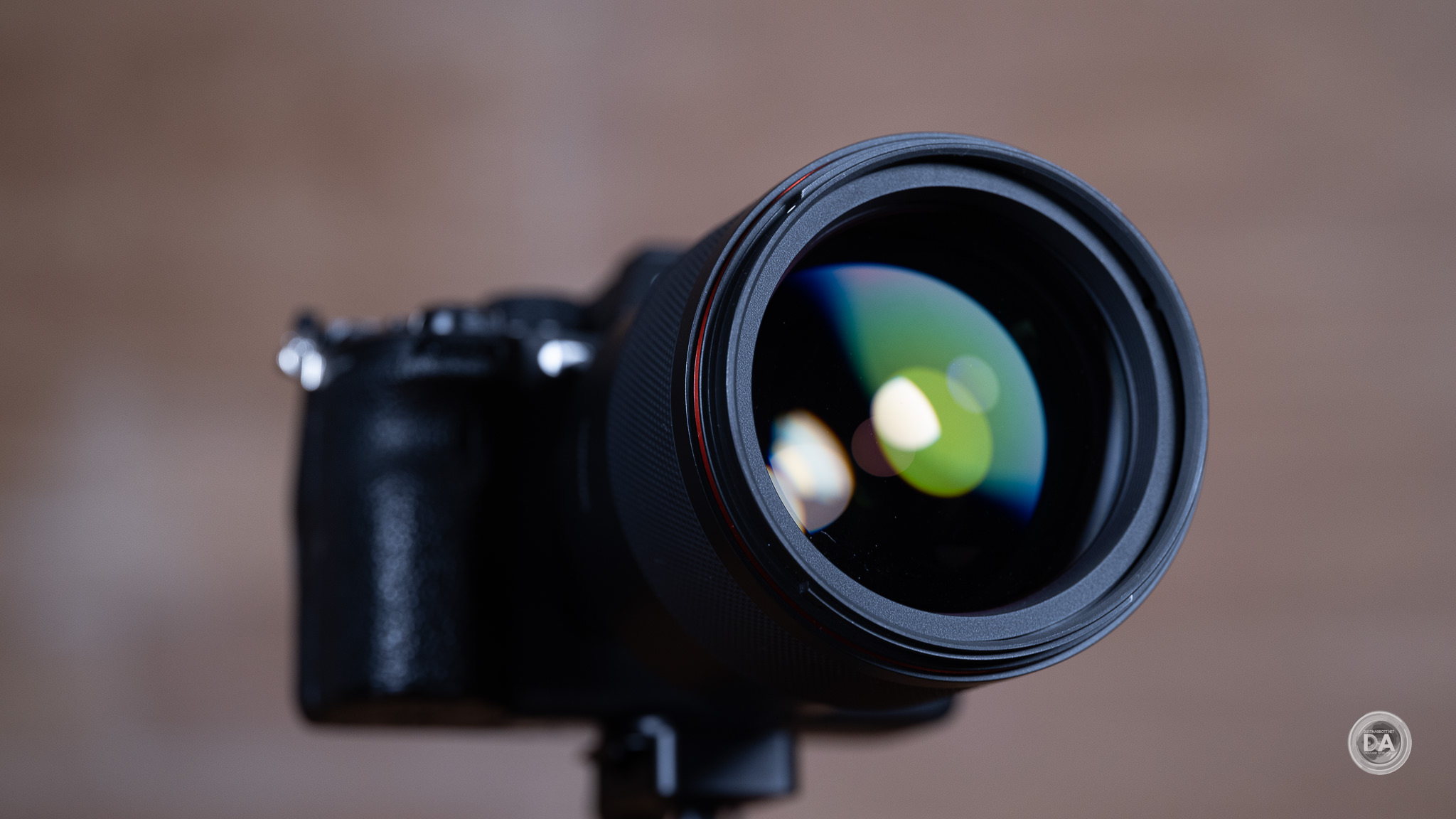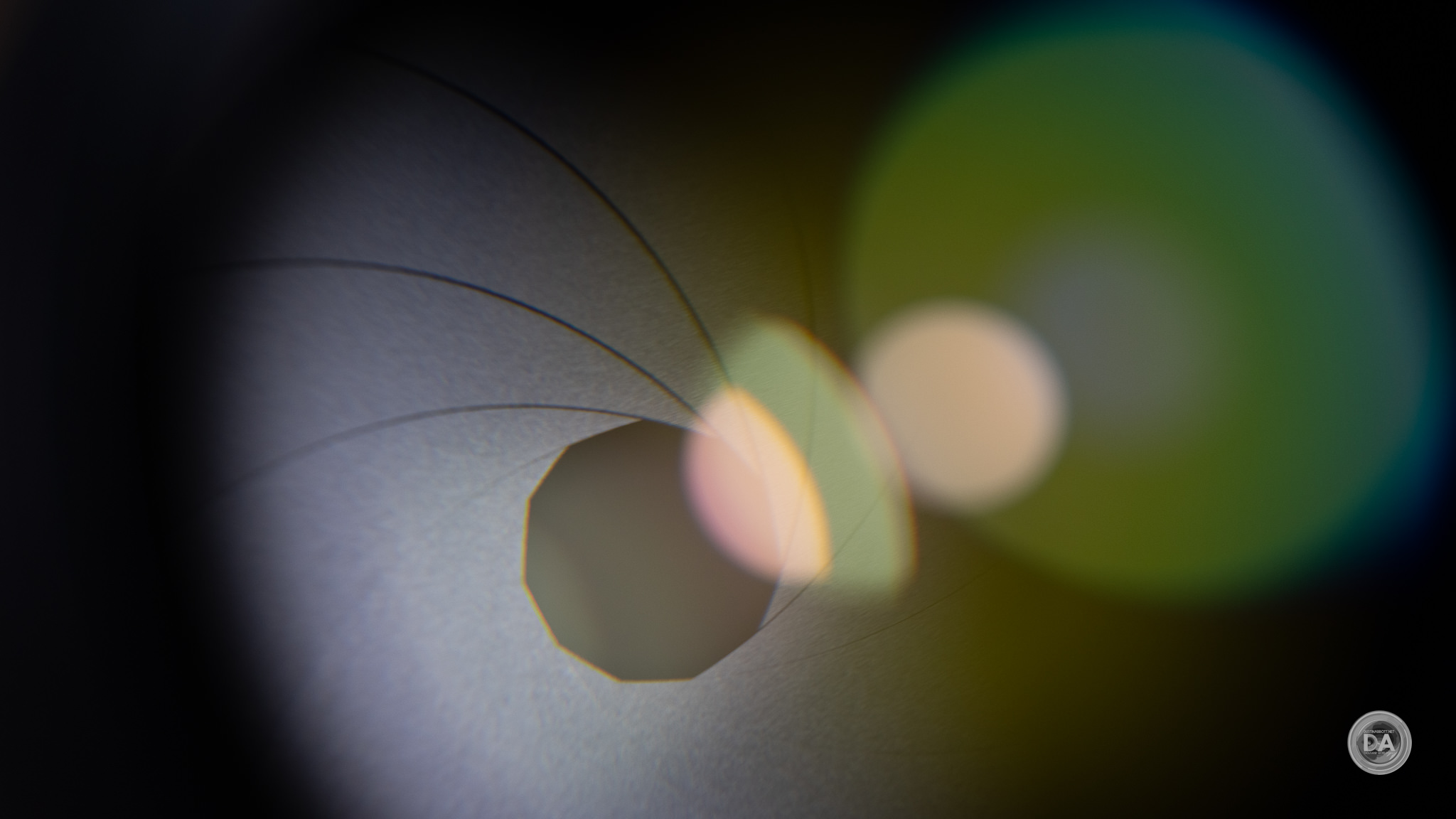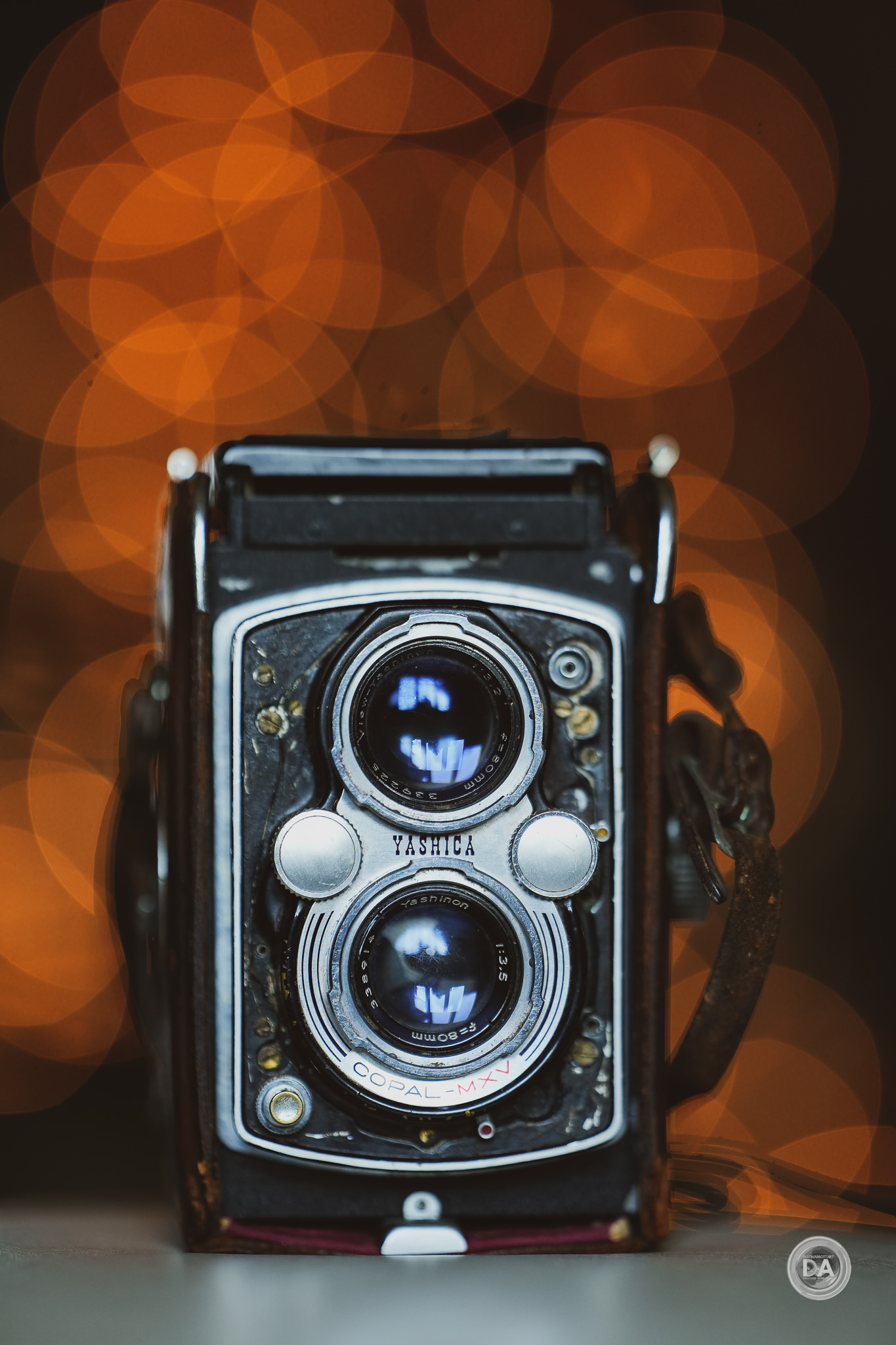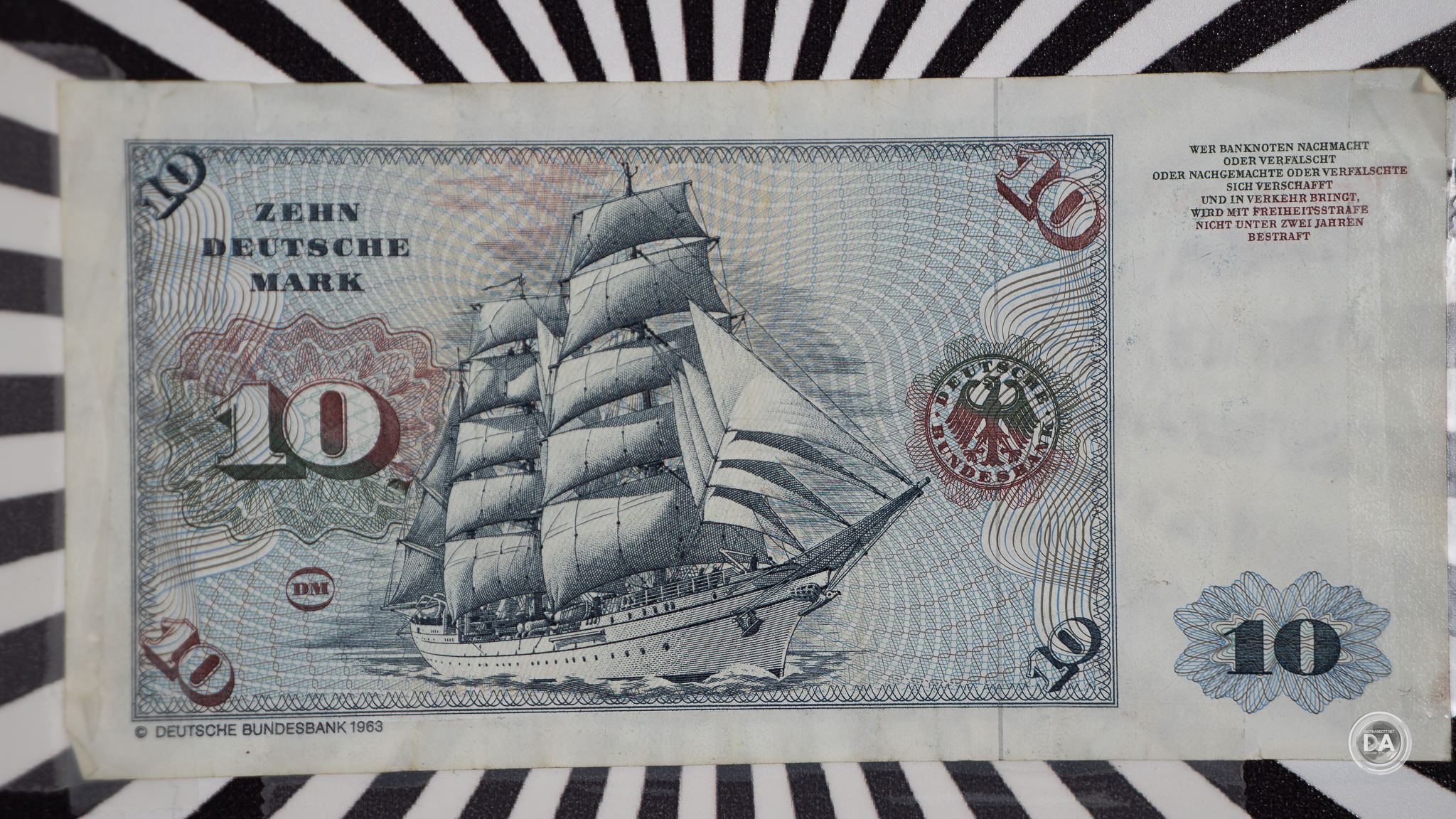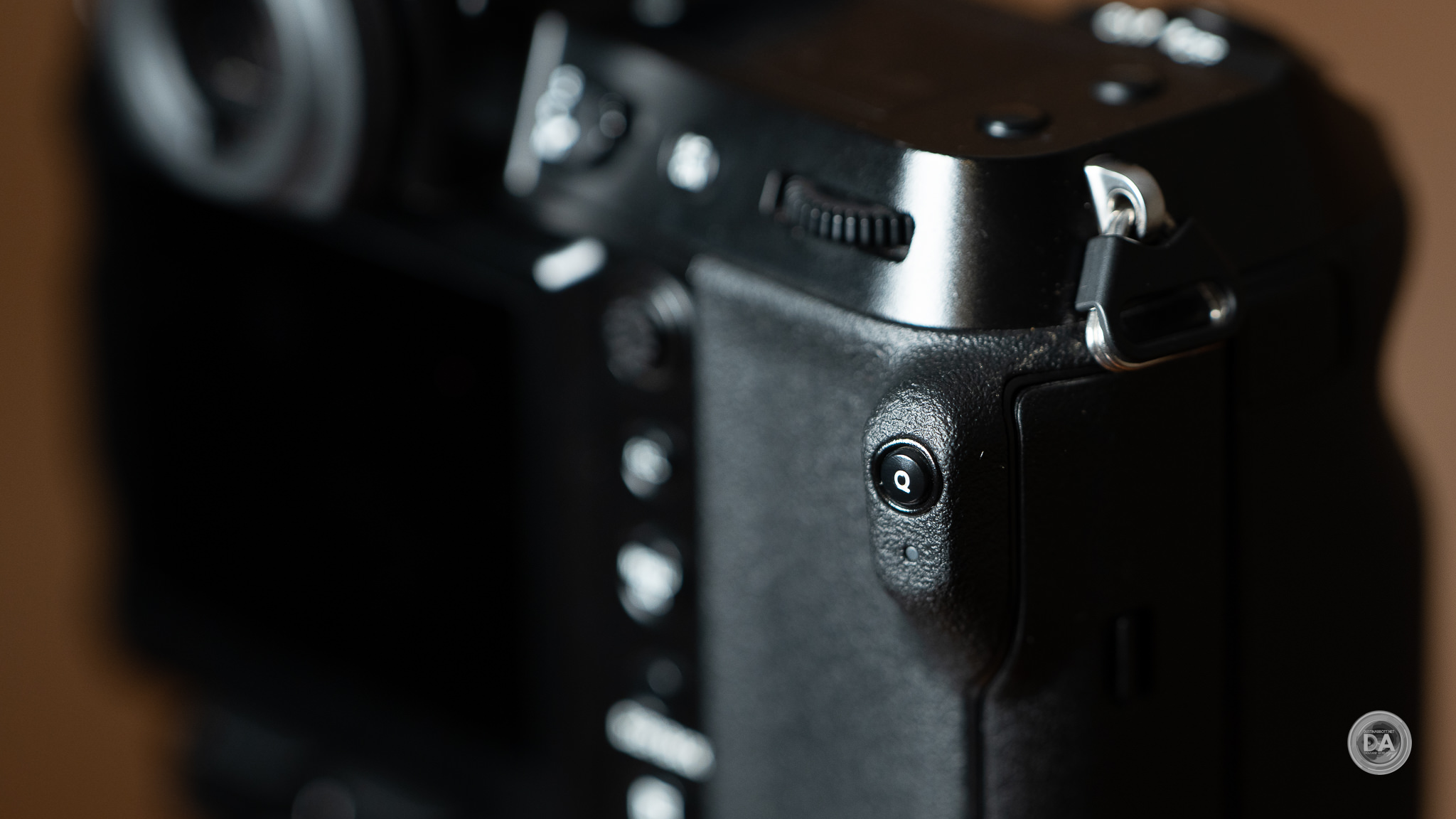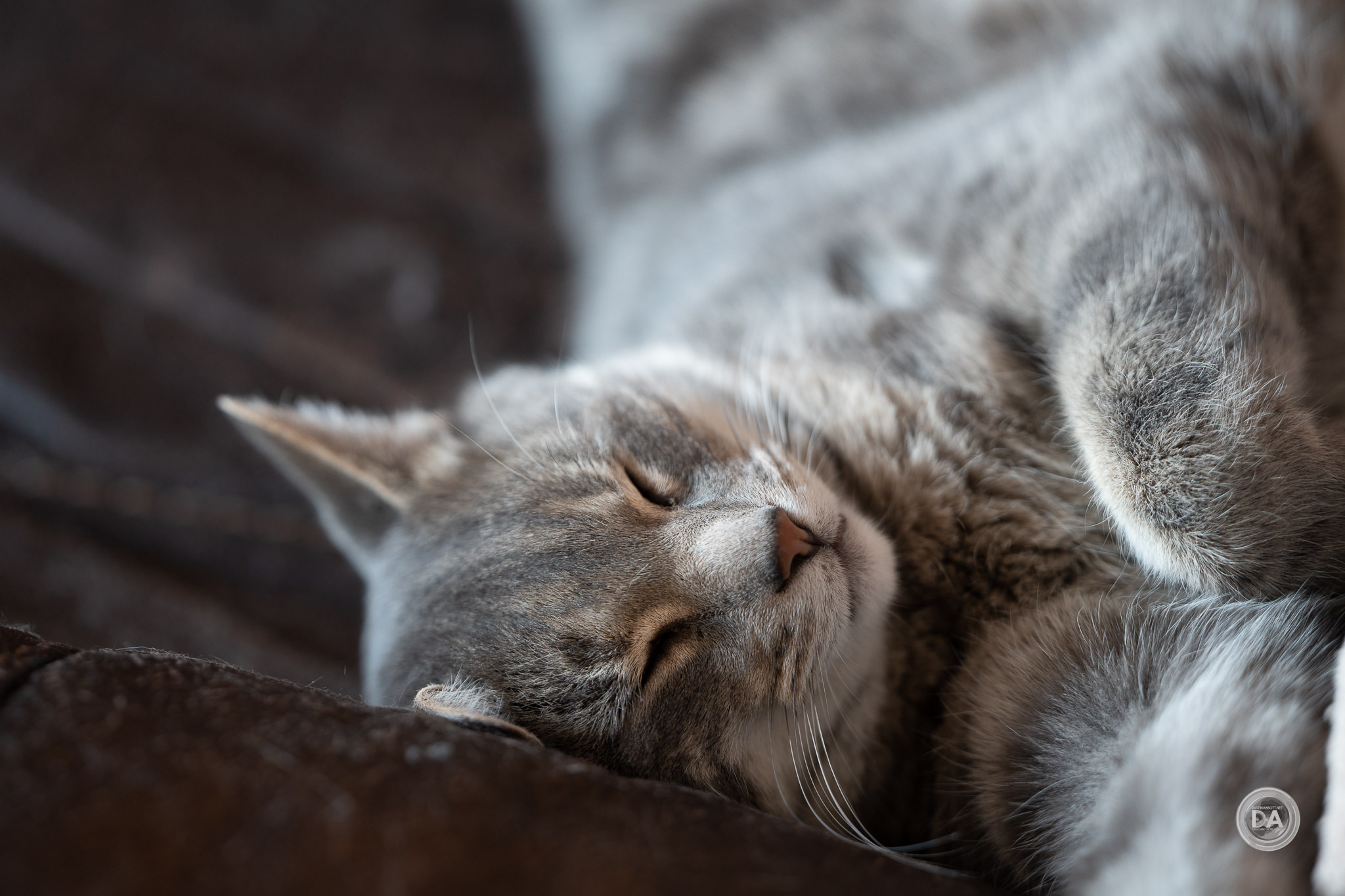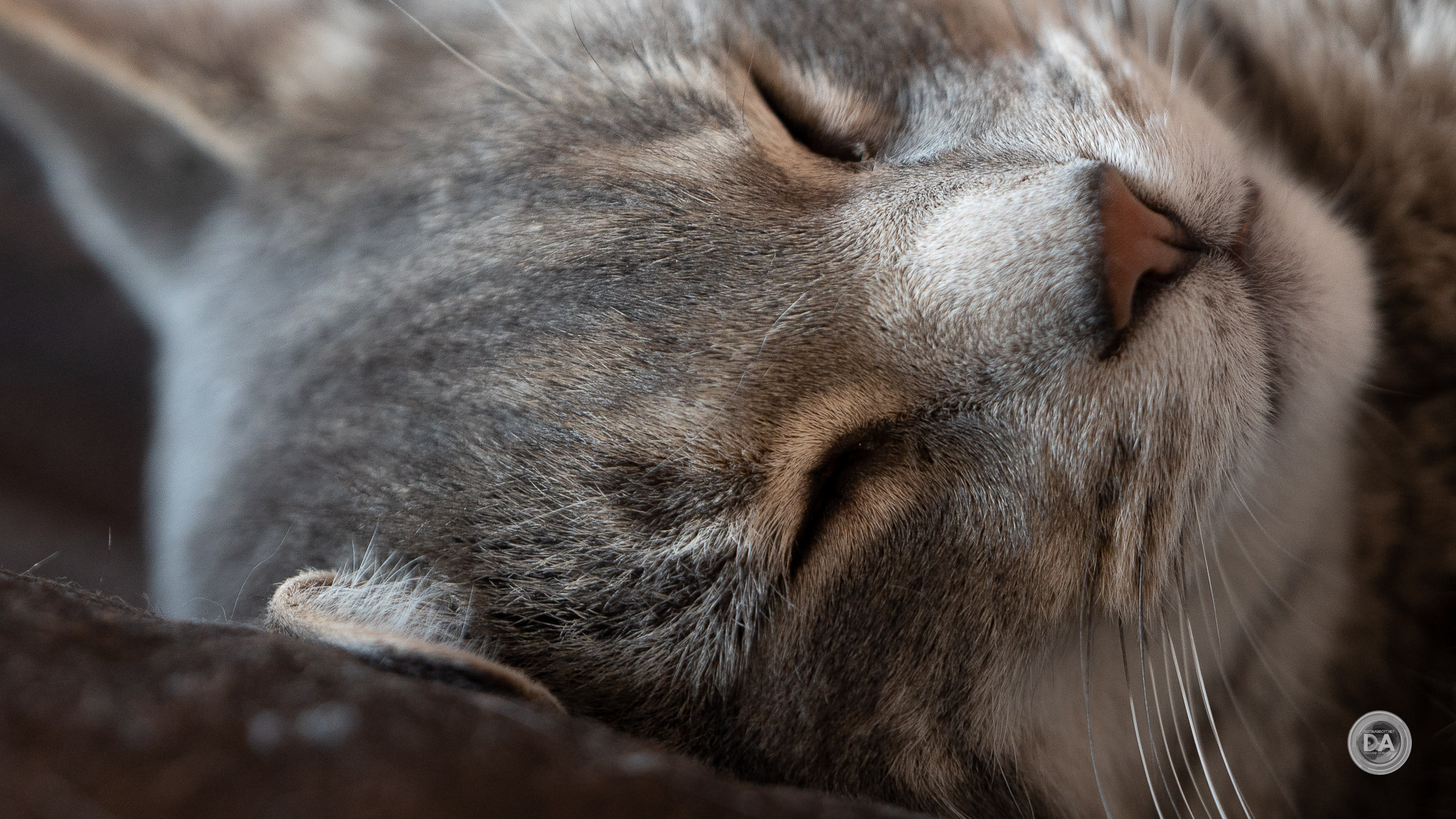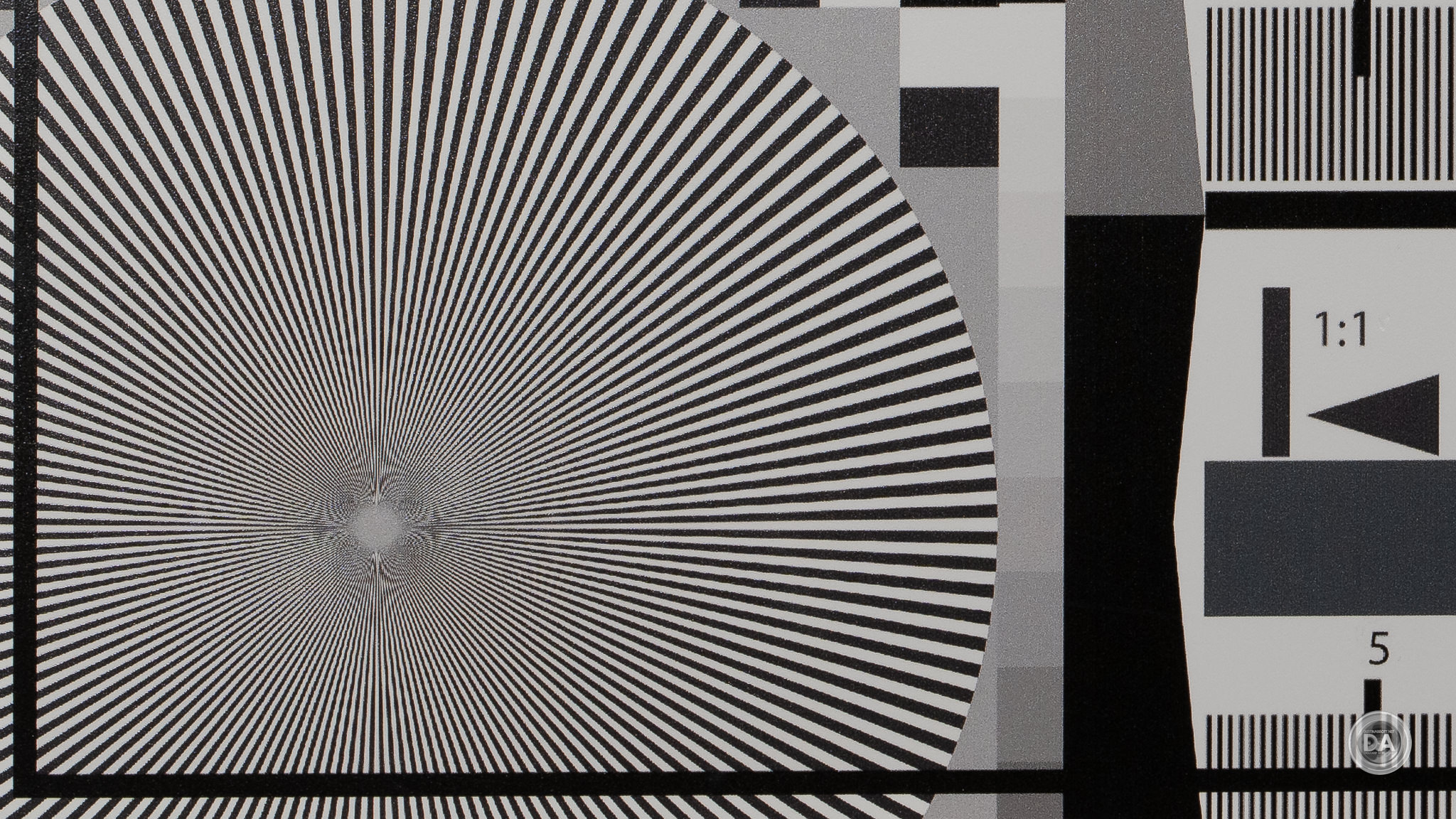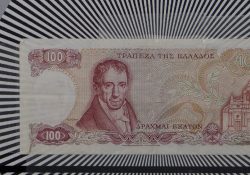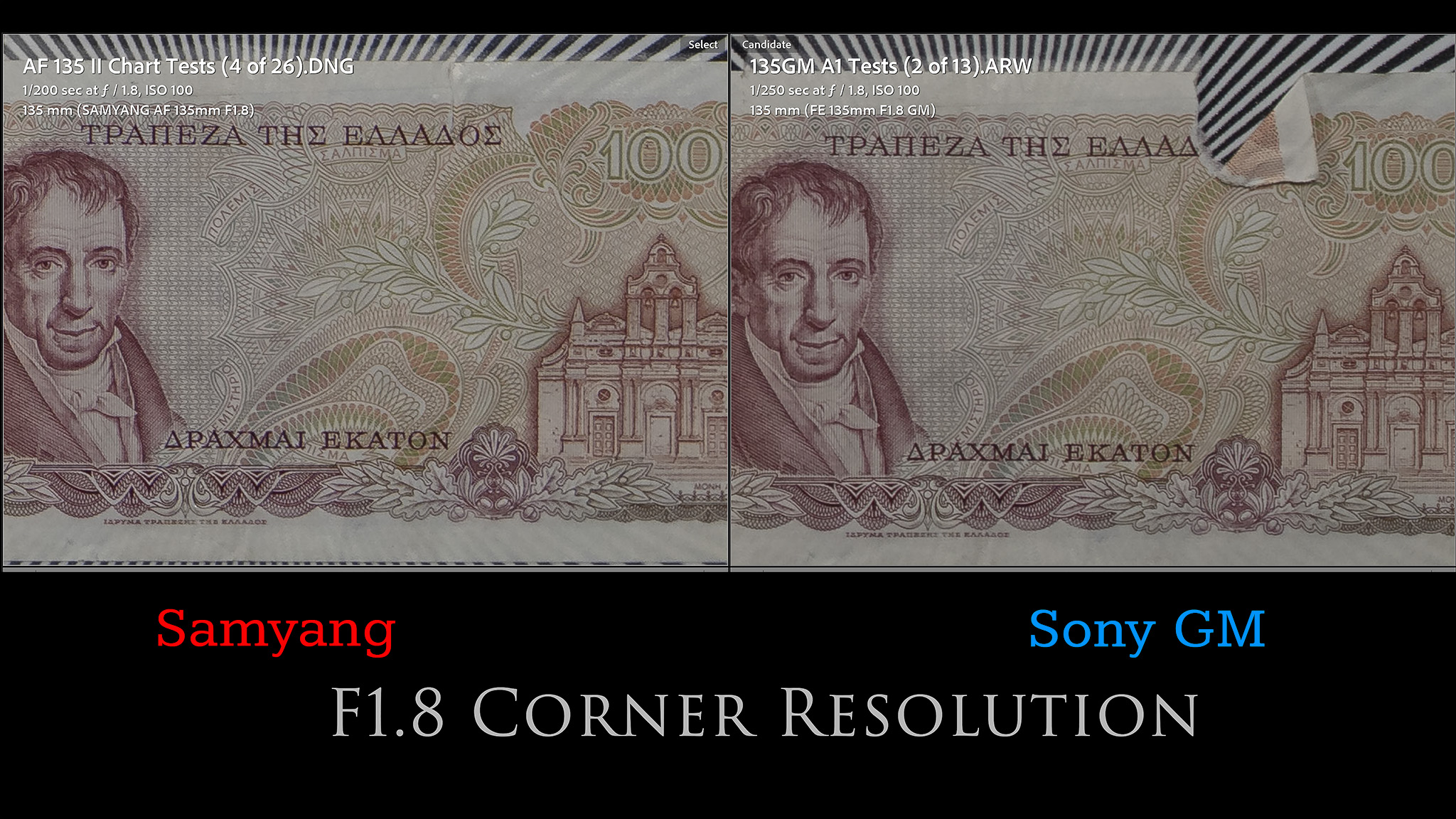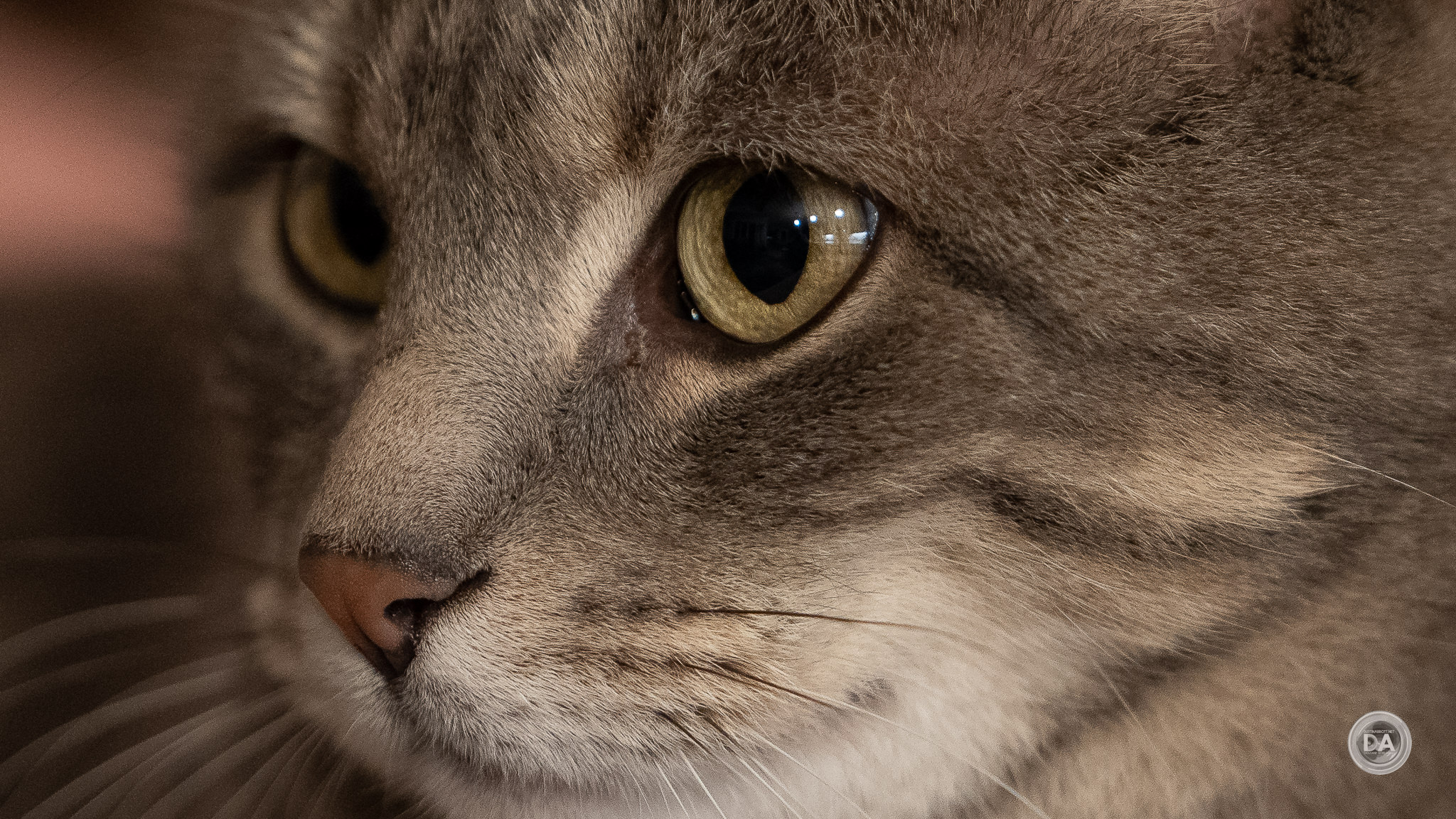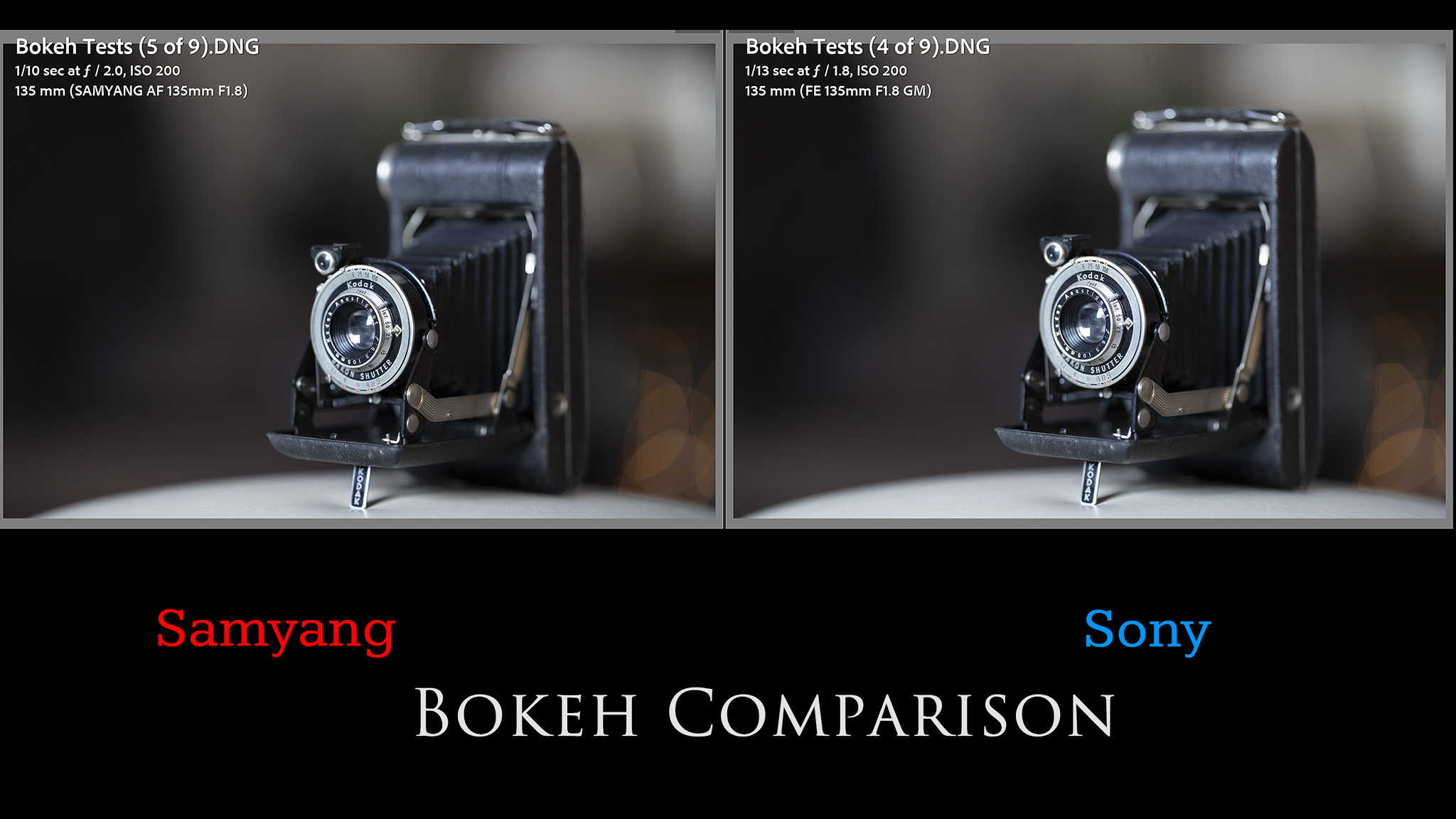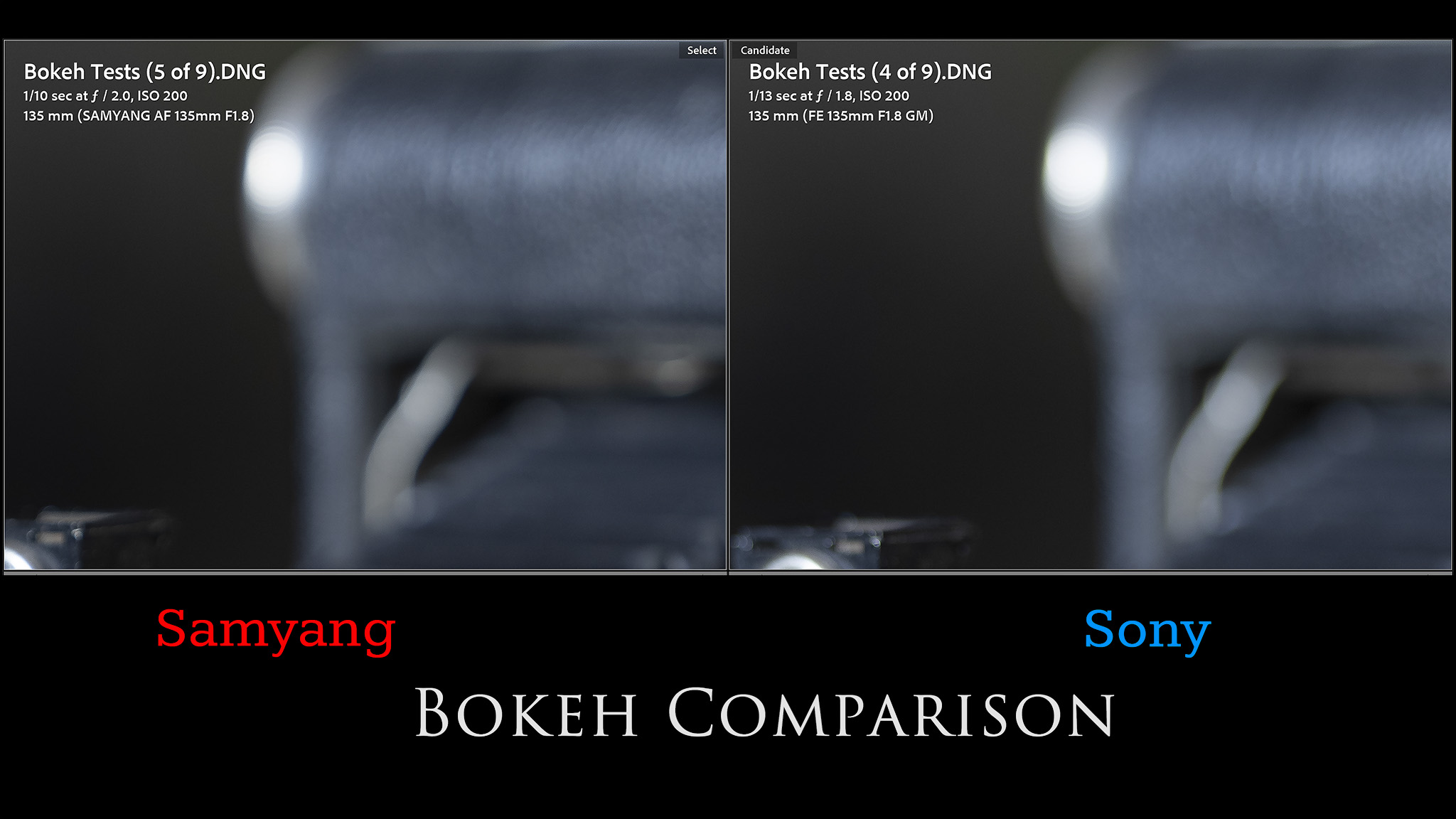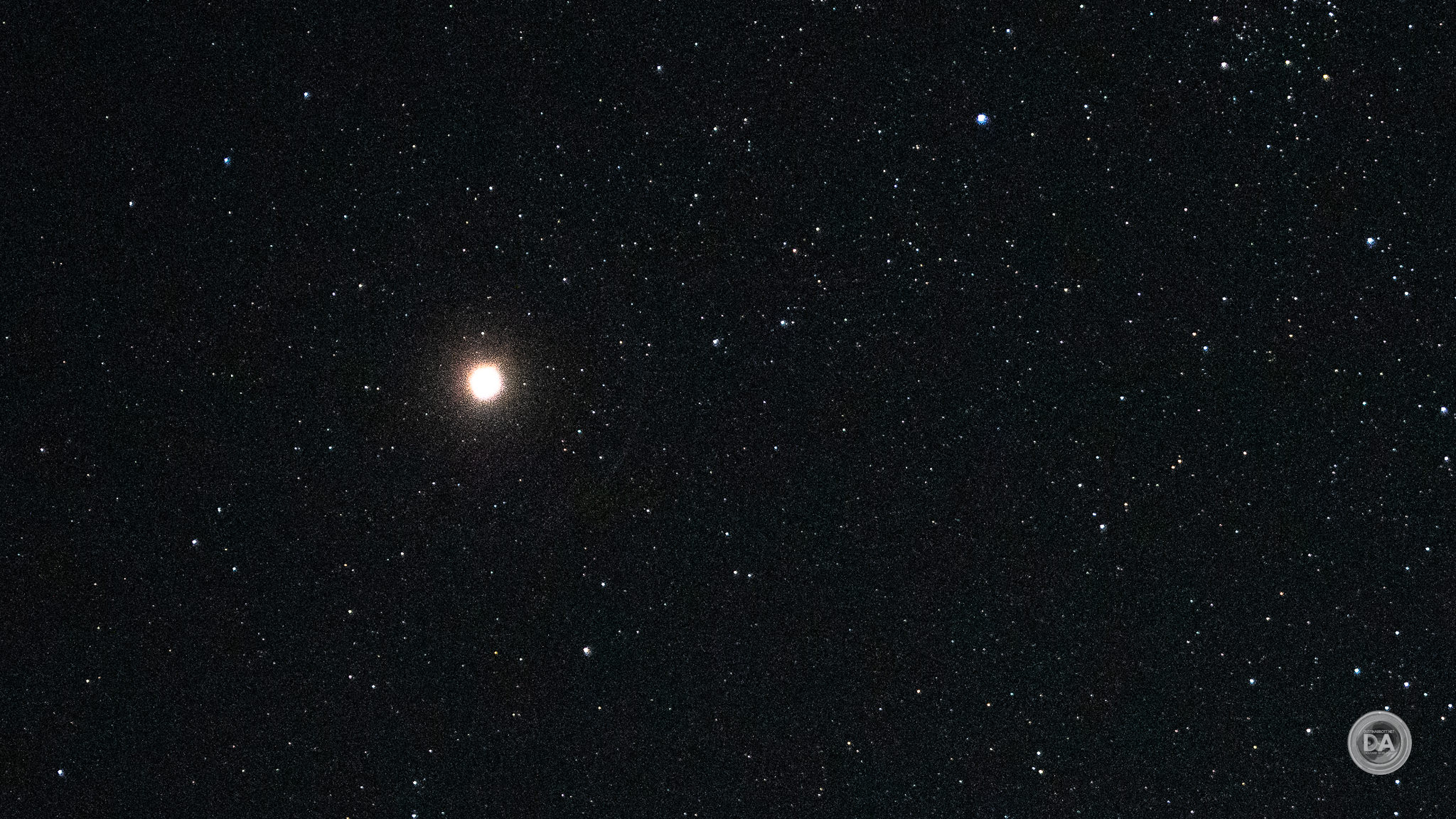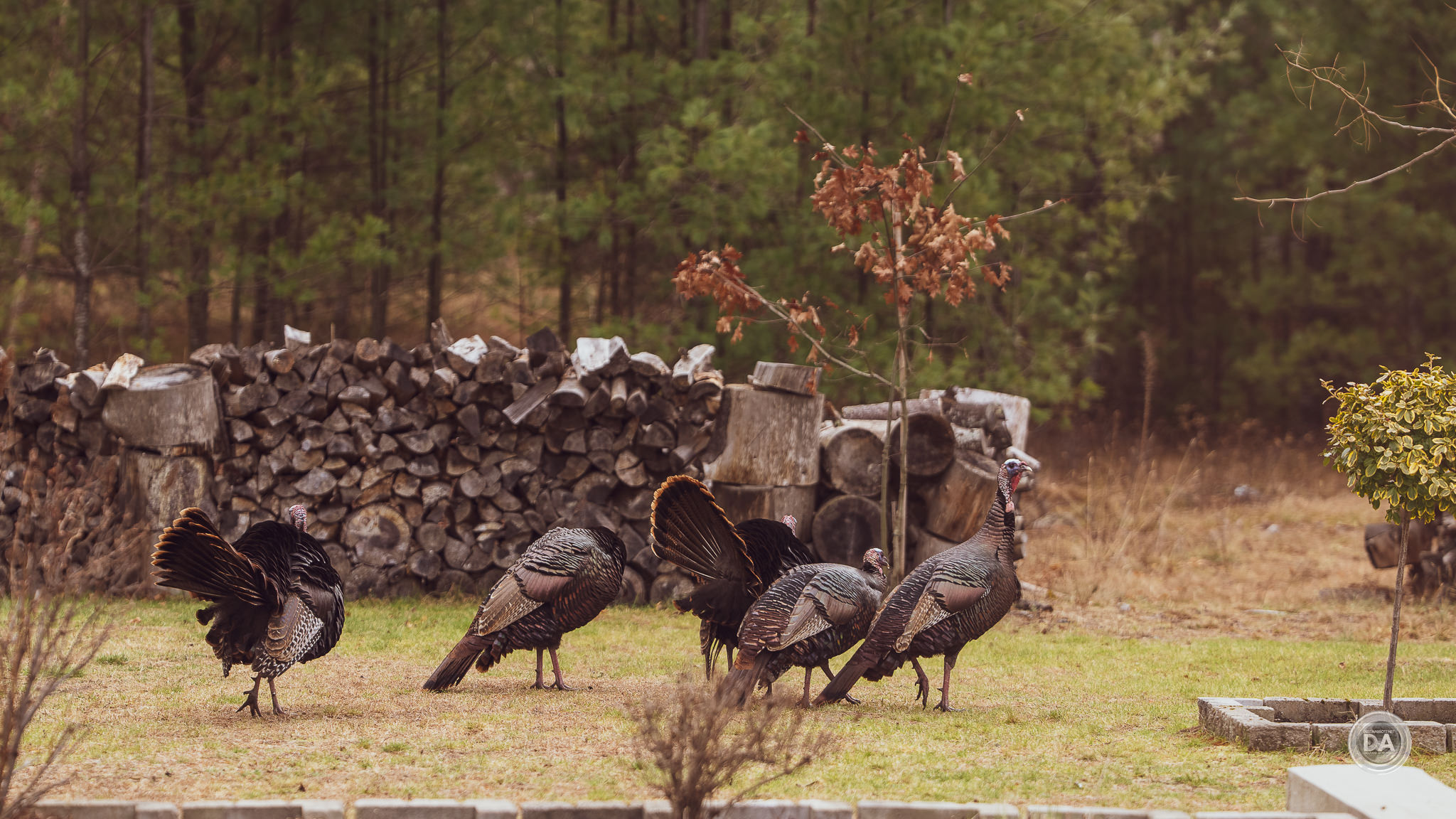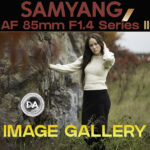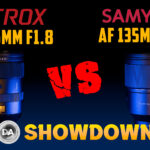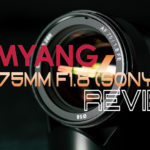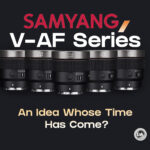I’ve noted that I’ve really enjoyed testing recent Samyang lenses because of their great mix of performance and price, but I don’t think that I’ve anticipated any Samyang lens as much as the new Samyang AF 135mm F1.8. I was shocked when I reviewed their budget manual focus 135mm F2 nearly 8 years ago, as it not only handily beat my Canon 135mm F2L that I used and loved at the time, but it also came very near to the performance of the amazing Zeiss 135mm F2 APO Sonnar lens. I’ve been advocating for them to produce an autofocusing 135mm lens ever since they started making AF lenses because I knew they already had an exceptional optical formula to start with at this focal length. This isn’t that same optical design. It is more complex (13 elements in 11 groups vs 11 elements in 7 groups) and has many more exotic elements (6 vs 1). What hasn’t changed, however, is that this is a lens that can produce both beautiful sharpness and incredible bokeh, and it is the latter area where it might even best the mighty Sony FE 135mm F1.8 GM (my review here).
About 3 ½ years I reviewed the first Samyang lens that I thought was truly competitive with the main brands, and it was the Samyang AF 85mm F1.4 FE. I subsequently reviewed the Canon RF mount version of the lens and found it even better (they added an AF/MF switch to the design). In late 2021/early 2022 Samyang started releasing their Series II lenses, which built upon the solid foundation of Samyang’s early optical success with autofocus lenses while improving their build, features, and autofocus. I first looked at the Series II version of the AF 50mm F1.4, and found it a major improvement over the first generation lens. More recently I reviewed the Samyang AF 85mm F1.4 Series II lens, and will subsequently be looking at the new 35mm F1.4 Series II. The Samyang AF 135mm F1.8 (subsequently called the AF 135mm for brevity) isn’t technically a Series II lens in the way the three others are, but it is of the same generation of design and is lumped in with them.
I view a 135mm lens as somewhat of a flagship lens, as it is typically the longest conventional portrait focal length for a designer and tends to optically special. The 135mm focal length is not as flexible as a 50mm or 85mm lens, but it also has the ability to create utterly special images with gorgeous subject isolation. I love using them wide open for full length environmental portraits, as they produce incredible subject isolation with lovely bokeh.
That’s certainly true here, and in entering the 135mm F1.8 space on Sony, Samyang is taking on a lens that I consider one of Sony’s best ever. There are certainly areas where the Sony still has a clear advantage, in my opinion, but there are also a few areas where Samyang has some wins. For now, the AF 135mm is only available on Sony FE, though here’s hoping that Canon and Nikon will wake up and allow their customers access to these excellent new lenses. It comes to market at a price point of right under $1000 USD, which makes it less than half the price of the GM lens, $400 cheaper than the “ported” Sigma ART series lens, and even more than $500 cheaper than the Zeiss Batis 135mm…and it only has a maximum aperture of F2.8. Clearly Samyang is a winner on price, but this review will attempt to define whether or not it can also compete on merit. So you can either keep reading or change over to watching in my definitive video review.
Follow Me @ YouTube | Patreon | Instagram | Facebook | DA Merchandise | Flickr | 500px
I want to thank Samyang for sending me a test retail copy of the lens for review. As always, this is a completely independent review. The opinions here are completely my own. *The tests and most of the photos that I share as a part of my review cycle have been done with the new Sony Alpha 1 which will serve as my benchmark camera for the foreseeable future (my review here) and the Sony a7IV
Samyang AF 135mm Build, Design and Handling
The Samyang AF 135mm F1.8 is a beautiful lens. I was quite pleased with how their new design language (that debuted on the tiny APS-C 12mm F2 AF) scaled up to much larger 135mm lens. This isn’t a small lens, as you can see, easily outstripping the 50mm F1.4 II and 85mm F1.4 II in size:
Samyang has a “tiny series”, but let’s just say that the AF 135mm is not a member! It is actually slighter bigger even than the Sony 135mm F1.8 GM, though the Sony is quite a bit heavier.
The lens is 93.4mm (3.7”) in diameter, leaving a large but common 82mm filter thread size that is shared with the Sony and Sigma 135mm lenses. The length of the lens is 129.6mm (5.1”), which makes it longer than the GM lens (by slightly less than 3mm) but not as big as the Sigma lens in its Sony FE version. The Samyang weighs in at 772g (27.2g), which is about 180g lighter than the GM and some 400+ grams lighter than the Sigma. It’s actually lighter than the older manual focus lens, which was fairly heavy at 840g. The AF 135mm is a reflection of Samyang’s growing design evolution. It very strongly resembles the other Series II lenses with what has become Samyang’s new design language. This includes a new diamond pattern texture of the focus ring and a transition of Samyang’s red ring (which previously really imitated Canon’s L-series lenses) to the new “hidden ring” design where the red is only visible from the front of the lens as it is somewhat hidden in the front fascia of the lens barrel. The resulting lens design is clean and modern.
The Samyang comes with both a lens hood and a quilted design pouch. The lens hood is a little more upscale than what I’ve seen on the other Samyang lenses. It is more heavy duty in the plastics and also has a rubberized transition ring at the front that helps absorb bumps and also serves a good place to set the lens down on.
I’ve watched Samyang grow in their lens design over the past 3-4 years as they steadily debuted new features. One of those was weather sealing, and the AF 135mm is no different. I count at least seven seal points in this diagram, including the various transition points in the lens (front and rear element, either side of the focus ring, and at the switches).
I consider weather sealing to be a must if you want to market your lens as a premium or professional lens, and Samyang has smartly recognized that many photographers feel the same. They’ve definitely embraced weather sealing as a part of lens design, which does help inspire confidence when the weather turns during a photo shoot.
The Series II lenses features some newer features for Samyang which have debuted over the past two years. One is a custom switch that gives you some options for how the focus ring will be used. You can tweak the options via the Samyang Lens Station (a $60 purchase I definitely recommend as it also allows you to quickly update the firmware. This might help with some improvement to performance and also will keep your investment “future-proofed”). I would like to see Samyang move to a lens-based USB-C port like Tamron and Viltrox have moved to, as that eliminates the need for an additional accessory for this functionality.
My preferred setup is that the M1 position has the ring focus as an aperture ring and the M2 position automatically enables manual focus. This gives you the functionality of an aperture ring and an AF/MF switch in one.
There’s also now a focus hold button which can be programmed to a variety of functions from within the camera just like on a Sony lens. The 135mm lens adds a three position focus limiter that allows you to cut out either close focus or distant subjects to help speed up focus or eliminate unwanted subjects. It’s a valuable feature here, as autofocus speed is the primary area where the Samyang feels limited compared to the G Master.
The AF 135mm also has an additional feature that is shared with the compact AF 24mm F1.8 in the form of a preset astrophotography mode. The focus hold button can be held down before powering on the camera to engage this mode. Here’s a bit more specifics from Samyang:
- ■ How to enter the astrophotographic shooting function (Custom mode)
- Automatic infinity focus setting function (Custom mode) specializing in astrophotographic shooting and LED index are added to the Samyang 135mm F1.8 FE.
- There are two methods to enter the custom mode, as follows:
- When the camera is turned on: With the focus hold button pressed, mount the lens.
- When the camera is turned off: With the lens mounted, press the focus hold button and turn on the camera.
- ※ When the camera body is turned off, or the camera is operating in the sleep mode, astrophotographic shooting mode will be canceled.
- ■ How to use the astrophotographic shooting function (custom mode)
- When the camera enters the custom mode, the camera focusing mode will change to MF.
- When the camera enters the custom mode normally, the LED index will blink red once, will move to the infinity position (factory default value) automatically and the LED will light in green.
- If the focusing position is changed due to the adjustment of the focus adjustment ring while using the lens, the LED will light in red.
- When you press the focus hold button briefly once, focus will return to the infinity position automatically and the color of the LED will change to green.
- ■ Calibration method in case the focus cannot be set to infinity accurately due to a deviation in the camera body
- Find and focus on a subject in infinity by turning the focusing ring.
- When you press and hold down the focus hold button for approximately 3 seconds, the LCD screen on the camera will become dark and then brighten and the infinity value will be calibrated according to the current focal point.
- The calibrated value will be saved in ROM within the lens.
I did need to calibrate this functionality on my review copy, but it is a valuable feature that really helps when setting up for those astro shoots in the dark!
The manual focus ring is nice and wide and has that new textured surface (with a rubberized finish). I like the tactile feel of the “micro pattern” (as Samyang calls it) and feel like it offers good grip. The damping of the focus ring is nice and smooth and shows very good functionality for finetuning. The focus action appears to be speed sensitive, but you can control the speed of the focus ring via the Lens Manager software if you have the Lens Station. Automatic magnification of the active focus area is engaged with the lens, which helps make the manual focus process more intuitive and accurate.
The body materials here are fairly good quality engineered plastics, and it feels like a quality lens even if not quite at the build level of the superlative GM lens.
If you look inside, you’ll find an aperture iris with 11 rounded blades (like the GM), and this higher blade count does help keeps things circular.
Here’s a look at the shape of the bokeh circles at F1.8, F2.8, and even F4.
The geometric shape is quite excellent, and the bokeh circles are nice and soft. Fringing around the bokeh highlights is not at all pronounced, so you won’t have to fear shooting portraits or other shots with bright lights in the background.
Samyang has managed to slightly best the GM in minimum focus distance (only 69 cm or 27.2”), though the 0.24x magnification figure is very slightly lower than the GM (0.25x). I suspect there is some mild focus breathing at play for the Samyang, though this is a very useful lens for up close work.
The large maximum aperture and longer focal length allow the AF 135mm to beautifully isolate subjects and leave backgrounds completely defocused. The fact that the lens is also very sharp produces great looking images with sharp detail on the subject and beautifully blurred backgrounds.
The Samyang AF 135mm strikes a very nice balance between a quality build while also keeping the weight down. I like the general profile and look of the lens and appreciate the growing functionality that Samyang is building into these new lenses. They don’t have quite the level of robustness that either a Sony GM or the recent Sigma DN prime lenses do, but this is compensated by a lower price point and lower weight (and frequently smaller size, though that’s not entirely the case here). I’m happy with the general trend of Samyang design.
Autofocus Performance
The Samyang AF 135mm F1.8 employs a Linear STM focus motor. This is the clearest area of separation from the Sony 135mm F1.8 GM, which employs dual high torque linear motors to drive focus. The 135mm GM is a superlative focusing lens, well suited for action photography where it just doesn’t seem to miss on a better camera like the a9 or Alpha 1. So right off the bat, let me clear: if you want a 135mm to use for sports or action photography, you need to spend the money for the GM. It has no true competitors in terms of focus. If your needs are just about anything else, then you’ll be perfectly happy with the Samyang.
Autofocus is fast, silent, and accurate with the Samyang AF 135mm in most all situations, delivering well focused results. If I had to go from minimum focus to infinity, I found a bit of a lag, but when I was shooting portraits side by side with the GM and not making major focus changes I didn’t see much difference.
I shot a lot of portraits with the lens (that is the main event for a lens like this!), and I found that Eye AF worked extremely well in my portrait series even when I placed foreground objects in between the camera and subject.
I have the Focus Hold button programmed to allow me to switch eyes during Eye AF for portraits, and that can be very handy when you consider how shallow the depth of field can be with a long lens like this that happens to have a very large maximum aperture.
I expected focus pulls to be slower than what they were for video work, but I found the focus transitions to be snappy and smooth, with good focus confidence. I also saw good results with the “hand test” where I put my hand out in front of the lens to block my face before allowing focus to return to tracking my eye. Samyang touts low focus breathing with the lens, and it does seems to do fairly well.
The focus motor is not completely silent; you will hear some faint whirring and clicking, though I essentially only heard it if I put my ear close. No sound was picked up during my video pull test.
That larger maximum aperture (F1.8) assists in low light focus, making this a decent lens to use in very dim situations. I was able to keep shooting after the sun was down and things were getting pretty dark.
Focus accuracy was generally excellent. I shoot a lot of very shallow depth of field shots with a lens like this, and I’ve got all kinds of great photos with pinpoint focus, like this shot of the “Q” button on the Fujifilm GFX100S I happened to be reviewing at the same time.
I would definitely take the autofocus performance here over the current Sigma 135mm F1.8 ART FE, but the GM is definitely next level.
Samyang AF 135mm F1.8 Image Quality
All you’ve got to do is take one look at the MTF charts from this lens to realize that this is a very special optical instrument. Even at maximum aperture the weakest point in the frame (the extreme corners) are sharper than what most lens can achieve in the center of the frame. At F8 the MTF results are essentially flawless. If we compare to the 135 GM results (last chart), we see that the Samyang is, on paper, easily able to compete.
I recognize that many of you don’t “speak MTF”, so we’ll break down this performance in real world terms for this review. If you don’t understand how to read MTF charts, you can check out my video on the subject here. The AF 135mm has an optical design of 13 elements in 11 groups, with six of those being “special” elements, including 3 ED (extra low dispersion), 2 HR (high refractive), and one U-ASP (ultra-precision aspherical) lens. Put simply, that adds up to very sharp images:
We’ll work through the chart results by first looking at distortion and vignette. While I keep monitoring the status of in-camera corrections for Samyang lenses, it still doesn’t seem that lenses aren’t receiving correction in camera for JPEGs or video. My JPEGs of my chart test are no more corrected that my RAW images. I mostly shoot RAW images, so I don’t think about it much, but those of you who typically rely on in-camera corrections and shoot JPEG are going to be disappointed here. My hope that is Sony will afford Samyang the courtesy that third party lens makers like Tamron and Sigma get lenses get in terms of these corrections, but that day has not yet arrived. Fortunately Samyang has been making lenses in the past couple of years that don’t seem to need a great deal of correcting, so that certainly helps.
There was no distortion to correct (I left it at zero) and vignette was a paltry +28 to correct (about a stop in the corners). That’s literally just enough to be slightly flattering, and I suspect that you’ll probably be adding more vignette than you have to remove! Look at the lower right corner of this wide open shot and note how bright it is. That’s with zero correction.
The 135 GM is also exceptional here, but I did correct just a tiny bit of distortion (-1) and had to add a very slight bit more vignette correction (+35). In the real world you wouldn’t notice a difference, but it’s a positive for Samyang that they are holding their own here.
So how about chromatic aberrations? There really weren’t a whole lot to find of the LoCA (longitudinal chromatic aberrations). I found shiny surfaces resisted color fringing and there was little only a tiny bit of fringing around very bright bokeh highlights.
This time of year one of the most interesting things visually to shoot is the dried weeds and grasses as the early winter light shines through them. They make for pretty pictures…unless your lens suffers from LoCA, and then all you can see is the colored fringing. That was zero issue here, and I shot many of those interesting scenes with nothing but beautiful results.
I also looked for and couldn’t really find any evidence of Lateral CA (LaCA) in my chart tests or real world images. You can see how clean the transitions from black to white are in this deep crop from my test chart.
So far, so very, very good!
So how about resolution and contrast? Here’s a look at my test chart: *All chart tests done with a Sony Alpha 1 (50MP) using a tripod and a two second timer.
And here are the crops (at roughly 170% magnification) from the center, mid-frame, and extreme corner at F1.8:
Wow! That’s exceptional. The performance across the frame is just fantastic, with the absolute corners being very close to as sharp as the center of the frame. So how does this stack up against the mighty G Master (which is one of the sharpest lenses I’ve ever tested, period!)
The two lenses are very, very close. I’d give the slight edge in contrast in the center of the frame to the Sony, while the Samyang looks better at the edges of the frame. Bottom line is that you probably wouldn’t be able to distinguish one from the other in terms of sharpness and contrast.
How sharp is this? Well, here’s a look at at a higher ISO shot of Ferrari (ISO 1600, so not peak performance) wide open, F1.8.
Look at the amazing detail in that crop!
Stopping down to F2.8 ratchets sharpness and contrast up to epic levels, with detail pretty much popping off the screen.
Moving on to landscape apertures like F5,6 results in perfect details across the frame even on high megapixel bodies. You can see the amazing detail in these crops:
Minimum aperture is F22, and despite the brilliant sharpness of the lens, diffraction causes softening (particularly on high resolution bodies). I typically recommend using F11 as a natural limit for peak performance.
So how about the bokeh? This is an area where I feel like the Samyang exceeds the GM lens, as it sports amazing contrast and detail but doesn’t have quite as creamy of bokeh as the Samyang. You can see that, first of all, the Samyang has better wide open geometry, with more rounded circles in the specular highlights.
If we look closer, we find that the Sony has more of an inner line on the bokeh circles, and you can see that the shape on the left side has a little more edging while the Samyang renders a little softer.
Here’s a real world example (this actually slightly favors the Sony as I bumped the aperture ring on the Samyang and it is at F2 rather than F1.8). I deliberately set up the shot with a busy background, but that hardly mattered as both lenses erased all of that into a flattering blur (something that 135mm F1.8 lenses excel at!!)
If we look closely at the transition area on the camera itself, however, we see very slight advantages for the Samyang with less edges and a slightly softer blur.
Likewise in this portrait comparison, I find the background from the Samyang ever so slightly softer.
If you say, “I don’t really see it”, I don’t blame you. Bokeh is subjective, and while it is my generalized impression from having shot a number of images with both lenses, it can be difficult to illustrate the point.
Leaving the comparison behind, at closer focus distances the longer focal length and large maximum aperture simply obliterates backgrounds, leaving them soft and creamy:
But where this lens is exceptional is that it also thrives in medium and further range. There’s no ugly transition zone, which allows to shoot at further distances and still have a beautiful melting away of the background, which is part of what makes a 135mm lens so special to me for full length environmental portraiture.
We’ve already noted how nice the bokeh with bright specular highlights is, and that all adds up to a lens that will really delight with its rendering of defocused areas in general.
I don’t often test telephoto lenses for their astrophotography potential, but since Samyang has marketed this lens with some astro-specific features, I wanted to test the potential of the lens for more deep space astro work. The results were impressive. We’ve already seen that the AF 135mm has very low amounts of vignette, which will certainly help for night sky work. What it also has is extremely low levels of coma, which means that star points stay nicely defined even towards the edges of the frame.
I find wide angle lenses more interesting for astro work if you want to include something of the environment, but a longer focal length is more interesting if you want to bring heavenly bodies a little closer. Mars shines brightly in this shot, for example.
I can see why Samyang has promoted this aspect of the AF 135mm’s performance, as it certainly shines at night!
Flare resistance can be a difficult challenge for larger aperture telephoto lenses, and the Samyang is about average here. I didn’t find any major problems, but there will be a few situations where you will see a few ghosting artifacts, including a little haloing around certain bright lights. The other shots in the series represent bright sun in the corner of the frame first wide open and then stopped down to F11, where the ghosting artifacts are the most pronounced.
Bottom line is that optically the Samyang AF 135mm F1.8 is a special lens. This is probably the highest performance you are going to find for under $1000 on the Sony platform. You can see more images by checking out the lens image gallery here.
Conclusion
The original Samyang 135mm F2 manual focus lens that I tested 8 years ago was a flawed instrument. It had a so-so build, was a little hard to nail focus with due to being a manual focus design for DSLRs and having such a narrow depth of field. It had no electronics and no features to speak of. And yet it sparkled optically, blowing away my premium Canon L series 135mm lens. Fast forward to 2022 and Sony shooters are now incredibly spoiled by a lens that shines even brighter optically, but has essentially none of the baggage that the old lens had. The Samyang (or Rokinon) AF 135mm F1.8 has a quality build, useful features, accurate autofocus, and delivers gorgeous images.
It is highly competitive with the utterly amazing Sony 135mm F1.8 G Master on many levels, though the G Master is still in another category when it comes to autofocus speed. But that really is the primary reason to consider spending double for the first party lens, and if you don’t shoot fast action with a 135mm lens, you are probably going to be just fine with the Samyang.
The biggest challenge for this exceptional lens is the reality of the 135mm focal length. I think that 135mm produces some of the most special looking images this side of the rare and expensive 200mm F2 lenses, but it’s also a less flexible focal length than the more common 50mm or 85mm portrait options. You need a little room to shoot with it (particularly if you want those amazing full body length environmental shots), and that means that although I own and love the 135mm GM, I don’t reach for it as often as what I would like. It is important to know your own shooting needs, but if you think the 135mm focal length suits those needs, then the Samyang AF 135mm F1.8 is an easy lens to recommend.
Pros:
- Nice construction complete with weather sealing
- Well executed, smooth manual focus ring
- Custom switch and focus hold button adds functionality
- Useful astrophotography feature
- Quiet, effective autofocus
- Incredible sharpness across the frame wide open
- No distortion
- Little chromatic aberrations
- Low coma
- Lovely bokeh
- High magnification
- Excellent price-to-performance ratio
Cons:
- Focus motor slower than GM version
- A little flare prone in some situations
Gear Used:
Purchase the Samyang AF 135mm F1.8 @ B&H Photo | Amazon | Amazon Canada | Amazon UK
Purchase the Samyang AF 85mm F1.4 II @ B&H Photo | Amazon | Amazon Canada | Amazon UK | Amazon Germany
Purchase the Samyang AF 50mm F1.4 II @ B&H Photo | Amazon | Amazon Canada | Amazon UK | Amazon Germany
Purchase the Samyang AF 35mm F1.4 II @ B&H Photo | Amazon | Amazon Canada | Amazon UK
Purchase the Sony a7IV @ B&H Photo | Amazon | Camera Canada | Amazon Canada | Amazon UK | Amazon Germany
Purchase the Sony Alpha 1 @ Camera Canada | B&H Photo | Amazon | Amazon Canada | Amazon UK | Amazon Germany | Ebay
Purchase a Sony a9M2 @ B&H Photo | Amazon | Camera Canada | Amazon Canada | Amazon UK | Amazon Germany | Ebay
Want to support this channel? Use these affiliate links to shop at: B&H Photo | Amazon | | Camera Canada | Ebay | Make a donation via Paypal
Buy DA Merchandise https://bit.ly/TWIMerch
Peak Design Leash Strap: Peak Design Store | B&H Photo | Amazon | Amazon Canada | Amazon UK
Adobe Photoshop Creative Cloud 1-Year Subscription
Get a discount off all Skylum Editing Software (Luminar, Aurora HDR, AirMagic) by using code DUSTINHDR at checkout:
Visit Dustin’s Amazon Storefront and see his favorite gear
Purchasing your gear through B&H and these links helps fund this website and keeps the articles coming. You can also make a donation here if you would like. Visit my Amazon page for some of my gear of choice! Thank you for your support.
Purchasing your gear through B&H and these links helps fund this website and keeps the articles coming. You can also make a donation here if you would like. Visit my Amazon page for some of my gear of choice! Thank you for your support.
Receive a 5% discount on all purchases at Amplis Foto, Canada’s Leading Photographic Supplier. Please enter discount code: AMPLIS52018DA in your cart. It is good for everything in your cart, and is stackable with other coupons, too! It will take 5% off your entire order! Proceeds go towards keeping this site going and providing you with new reviews!
Use Code “DUSTINHDR” to get $10 off ($15 CDN) any Skylum product: Luminar, Aurora, or AirMagic
Keywords: Samyang 135mm F1.8, Rokinon 135mm F1.8, Samyang AF 135mm F1.8, Samyang AF 135mm F1.8 Review, AF, Samyang, Rokinon, Samyang AF 85mm F1.4 II, F1.8, Samyang AF, Review, Dustin Abbott, FE, Sony 135mm F1.8 GM, Portrait, Sony a7IV, Sony Alpha 1, Bokeh, Sharpness, Resolution, Video Test, Sample Images, Real World, let the light in, #letthelightin, DA






